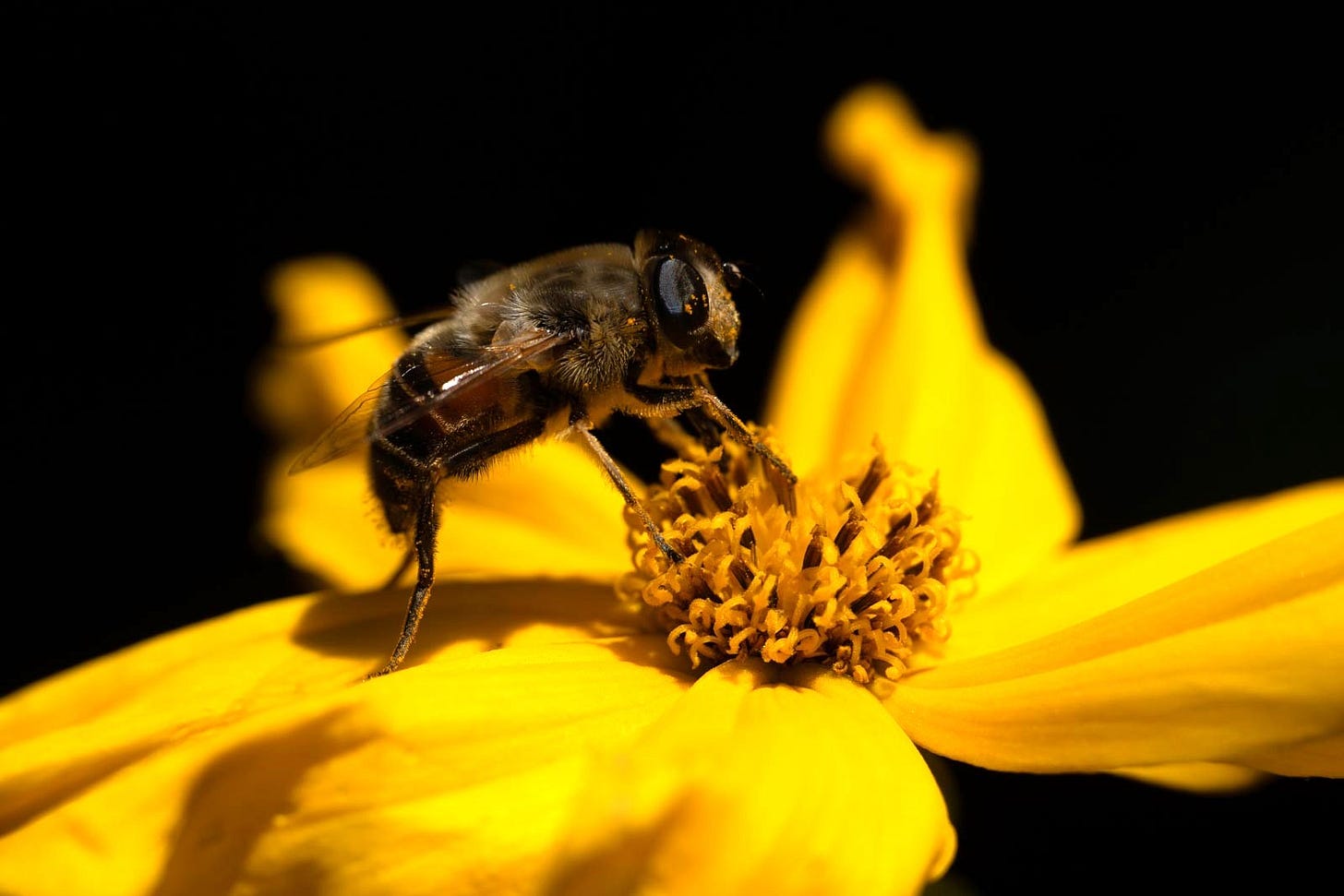Kia ora e hoa - hello my friend☀
In case you missed it in the last newsletter, we’re switching to a reduced frequency and you’ll now be receiving just two letters monthly: Critter of the Month, and a more personal From the Garden.
Usually, we look at native critters, but this is one I see a lot in the garden and I’ve become rather fond of them. They’re bee mimics, and it took me a while to learn that they are actually a kind of fly: the common drone fly, Eristalis tenax. They belong to the Syrphidae family, known as hover flies or, as I prefer, flower flies.
As you can see in the photo above, their appearance is remarkably similar to a honey bee, and likely get some level of protection from predators by mimicking an insect with a sting. They also behave with some similarities, collecting pollen in the bristly hairs on their bodies which they then transfer to their legs. As a minor difference, common drone flies transfer the pollen from their hind legs to front legs - honey bees do the opposite.
Common drone flies also have much shorter antennae than bees, spaced close together at the base, only one set of wings, and no sting. However, the easiest way to tell them apart is by observing them - as their family name suggests, they will hover above flowers and often stay stationery in mid-air. They are a wonderful little fly to watch and to photograph, as they aren’t very skittish of humans.
They are incredibly common, being found everywhere except Antarctica. In their larval stage they are called ‘rat-tailed maggots’ and are usually found in stagnant water with high organic content. They’re sometimes grown commercially for fish bait.
From a pollination perspective, common drone flies are fantastic to have in the garden. Flies roam much more widely than bees do, and are also more efficient. They are important agricultural pollinators, including our kiwifruit crops.
Happy fly spotting,
Zenobia x
The Weekly Wildlife newsletter is free, but if you’d like to support my work & receive member-only posts, join with a monthly or annual subscription.
If you would like to support The Dwindle River Garden with a one-off donation, tap the button below.







